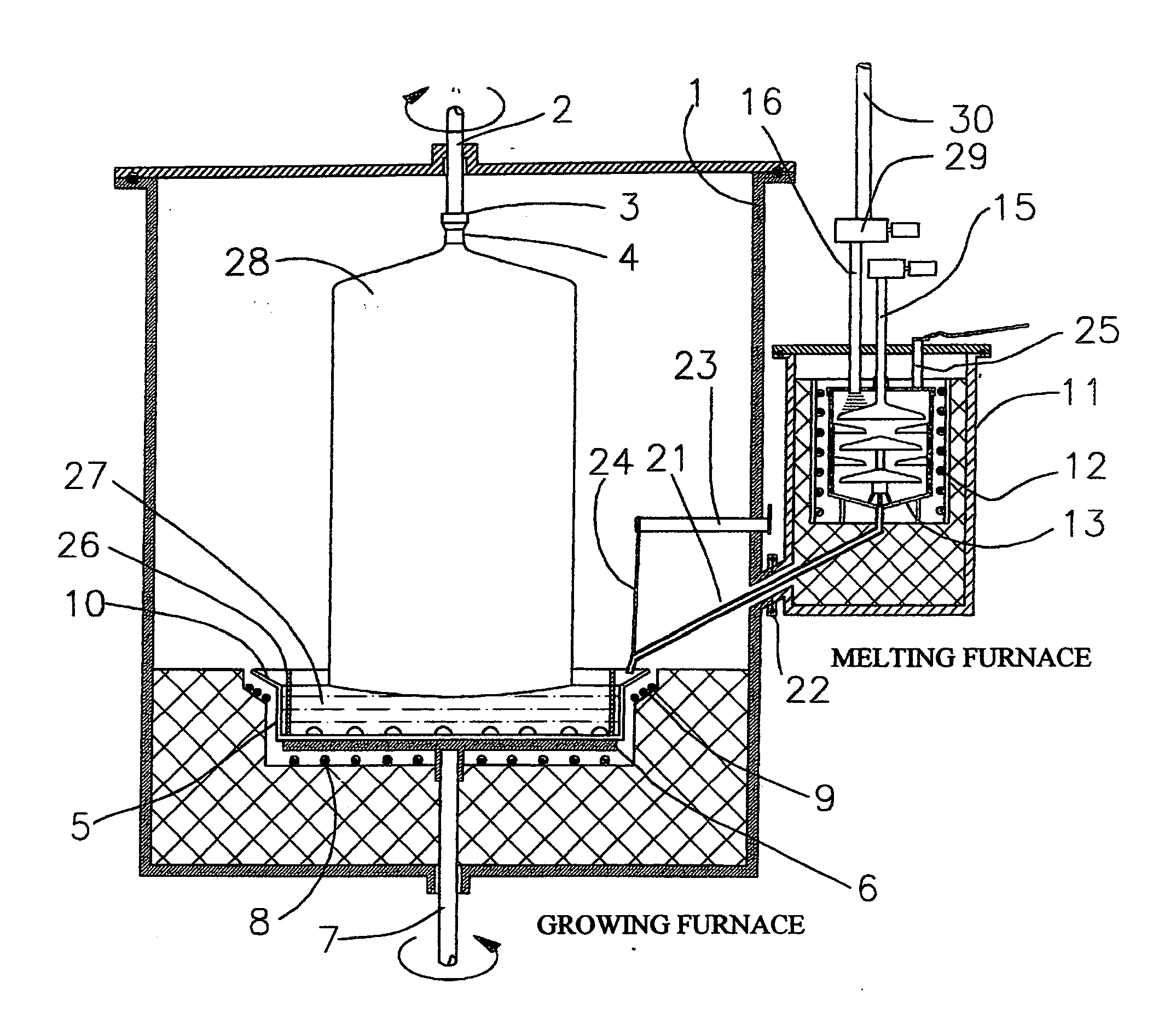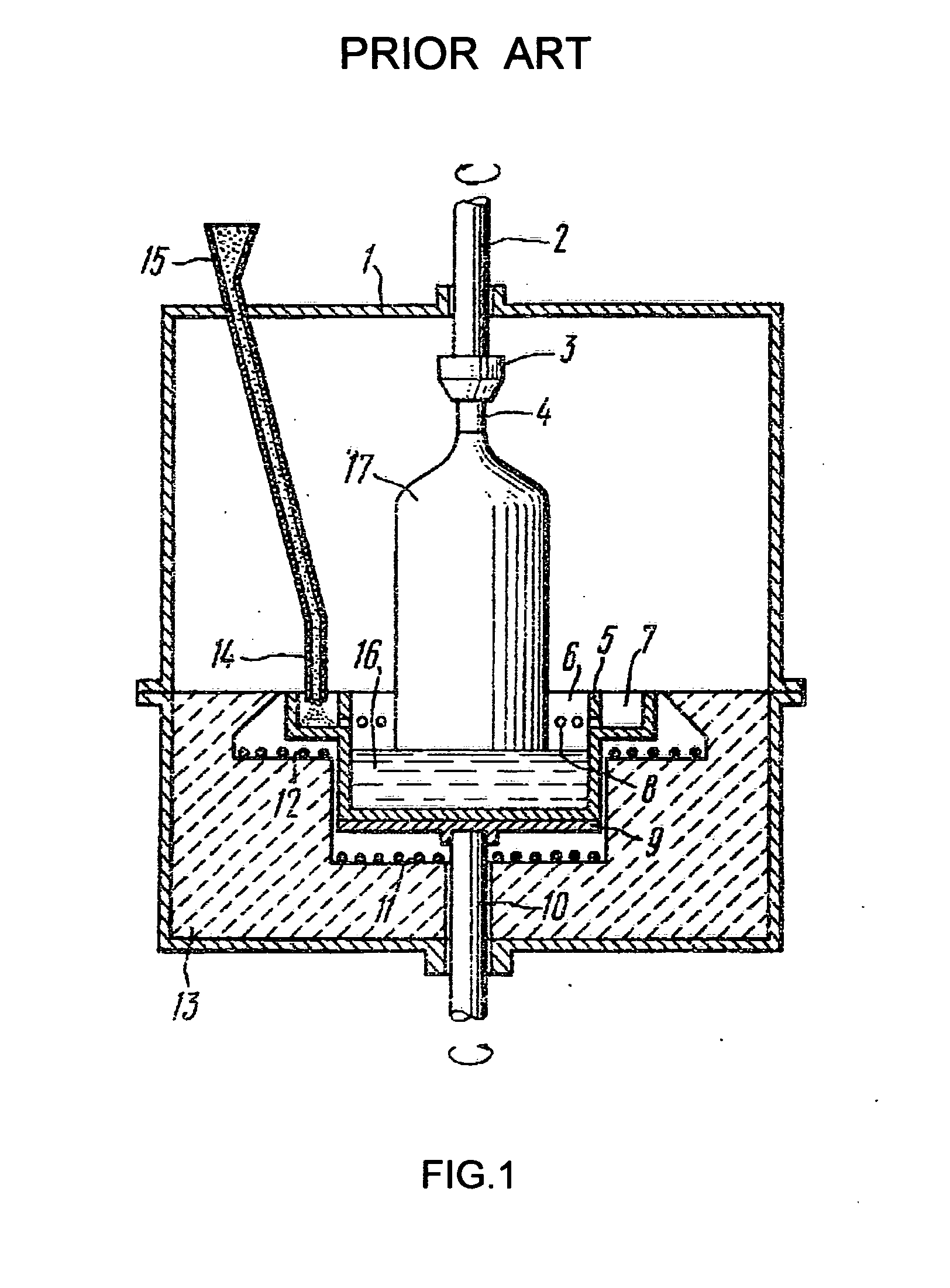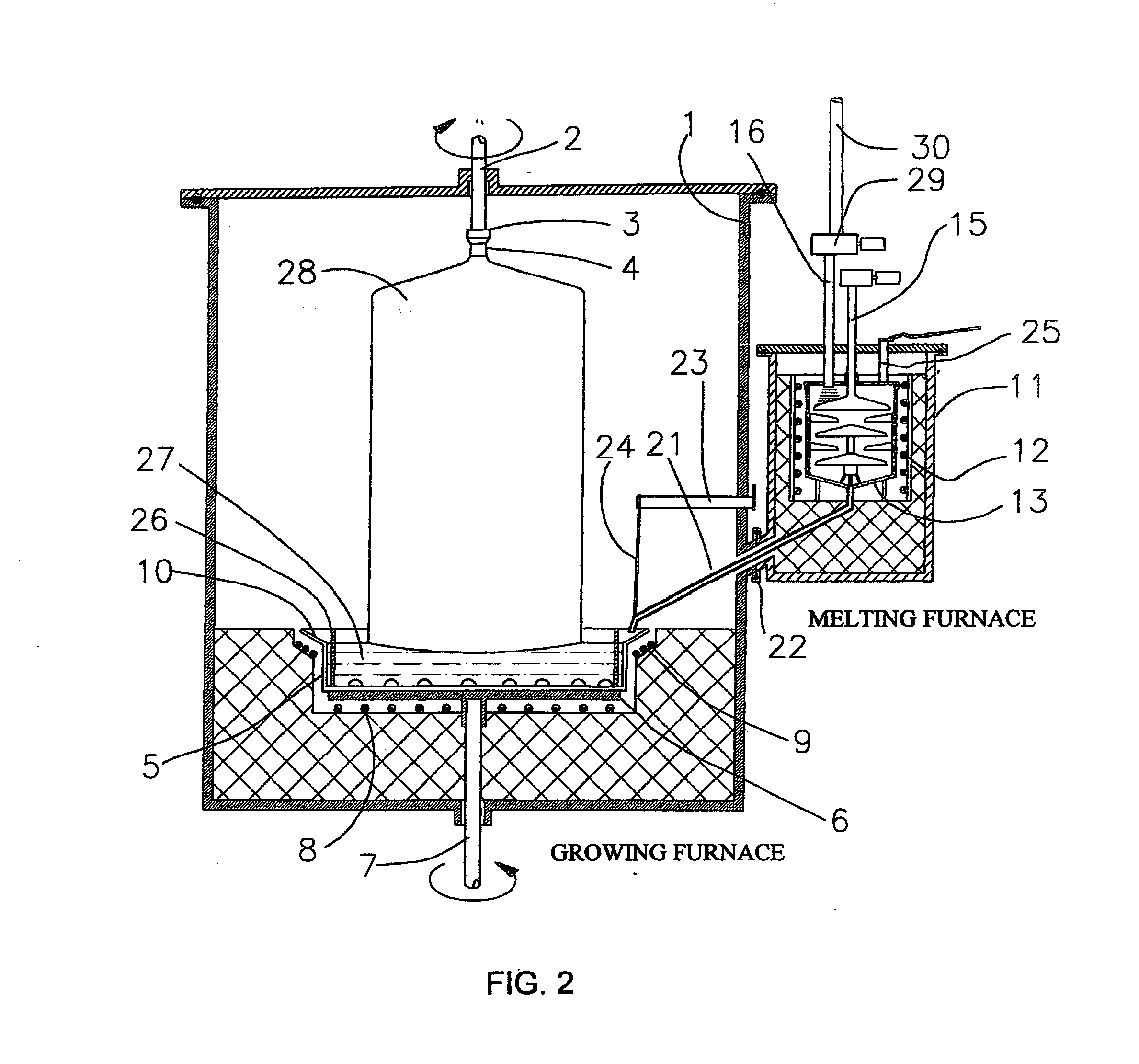The
disadvantage of these apparatus consist in that an axially symmetric thermal fields in the melt and in the growing
crystal cannot be obtained because of lack of
axial symmetry of the crucible and impossibility of crucible rotation.
The main disadvantages of the apparatus described in U.S. Pat. Nos. 2,892,739 and 5,314,667 result from a limited possibility of providing an adequate amount of overheating of the melt in the annular space of the crucible.
Failure to comply with this requirement would result in incomplete melting of raw material fed to annular space.
Because of a strong influence of the
melt temperature in the annular space on the
melt temperature in the inner space, this requirement either cannot be complied with at all or it may be met in the above described apparatus with substantial limitations, that is for certain performance parameters only (for example, for lower growth rates or smaller
crystal diameters).
Moreover, heat
radiation loss from the upper end of partition, extending over the melt surface, can result in the occurrence of solidification of the melt on partition's walls.
Once solidification starts on the inner wall of partition, solidified material grows toward
crystal until touching it, thus interrupting the crystal growing operation.
Another
disadvantage of the apparatus described in U.S. Pat. Nos. 2,892,739 and 5,314,667 resides in that outgrows may appear on the walls of annular space because of
crystallization on the walls of liquid drops arising from splashes making by raw material particles hitting the melt surface, as well as due to direct incidence of these particles on the walls and their sticking to them.
Gradual increase in the outgrows size sooner or later results in complete obturation of the radial gap in the annular space of the crucible, hence in the interruption of replenishing the melt with raw material and interruption of continuous growing process.
Additional problem arises when these apparatus are used for growing crystals, which density in a
solid form is less than in a liquid form, as in the case of
silicon, for example.
Any or all above means aimed at preventing solidification of the melt on partition or crucible walls and at providing the entire melting of raw material particles, falling into the annular space of the crucible, may, of course, enhance the continuous growing process, but they don't eliminate the main cause of all mentioned above disadvantages: strong influence of the
melt temperature in the annular space on the melt temperature in the inner space, or, in other words, zones of melting raw material and of growing
single crystal are too close to each other.
These means also unlikely may be universal, because in case of growing crystals of substances which melt has high
vapor pressure (e.g. alkali halides) the condensation of vapors on shields and covers may disturb their
normal functioning as well as may cause the accumulation of condensate and its subsequent falling into the melt.
This kind of feed maintenance, strictly speaking, is not continuous and, because of alternating solidification and melting raw material in the capillary, can have some restrictions in respect of frequency of discrete feedings, which in some cases can be not high enough to be consistent with really continuous
crystal growth.
Disadvantages of this kind of recharging melted raw material may result from difficulties to create a reliable seal between walls of housings and incandescent
feeding tube (heated above the
melting point of raw material), what needs to be done both to provide a reliable control of the feeding rate and to prevent
contamination of the melt due to air leaks when the growing is conducted at low pressures.
The apparatus does not use any partition between the growing crystal and the immersed end of
siphon tube, and this is its obvious disadvantage, because the hotter molten raw material, supplied by heated to high temperatures
siphon tube, may easily reach the perimeter of growing crystal and cause its
partial melting.
Besides, the lack of partition imposes a limitation on the rotation rate of the main crucible, because at high rotation speed some
waves or ripples on the surface of the melt, arising from immersed end of the
siphon tube, can reach the growing crystal and degrade its quality.
Nevertheless the apparatus under consideration is not free of disadvantages.
The main disadvantage lies in the fact that the
radiant heat exchange between the hottest lower part of growing crystal 17 and the cold walls of housing 1 is shielded by the inner walls of outer container 7 rising above the melt level.
This makes difficult to remove the heat of fusion and forces to lower the temperature of melt 16 closer to the
melting point resulting in limitation of growth rate, especially on the early stage of growing in length when the height of the crystal is less than the distance between the melt level and the upper end face of crucible 5.
Another disadvantage comes from the fact that side heater 12 is located too close to the column of melt 16, and because of this there is definite limitation of its maximal allowable temperature resulting in restriction of the rate of melting raw material particles on the bottom of outer container 7, that is in restriction of the feeding rate.
One more disadvantage of the apparatus described in U.S. Pat. No. 4,203,951 is the lack of partition between the inner walls of crucible and the growing crystal; if the temperature of the melt flowing down from apertures 8 is substantially higher than the temperature of the bulk melt, the growing crystal may be partially melted at its perimeter.
 Login to View More
Login to View More 


